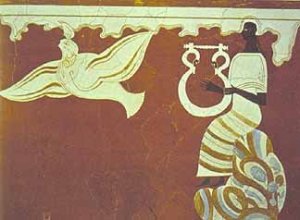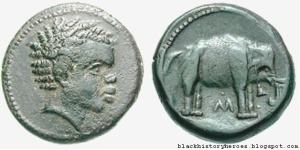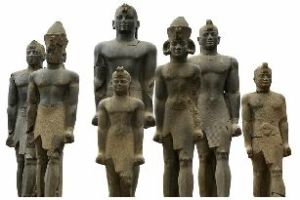There exists a multitude of breathtaking images from around the globe attesting to a rich, sophisticated culture for Africans and how they were viewed by their contemporaries.
The Ethiopian Dynasty of Ancient Egypt
In the 8th century B.C., Egypt was conquered by a mighty nation to the south.
When we think of ancient history we often times automatically think of the civilizations of Egypt, Greece and Rome as they have been imbedded in our memory since elementary school. However, there existed a great, powerful nation along the banks of the Nile that until recently has been largely overlooked. Fortunately, Egyptologists such as Peter Lacovara have made a career of telling the story of a land once forgotten through exhaustive research and on site excavations in the Nile Valley.
The kingdom of Nubia, which lay to the south of Egypt in present day Sudan, was once home to a culture that rivaled its more famous northern neighbor and even conquered it for nearly 100 years. This civilization was known by several different names at various times of existence namely Kush, Ethiopia and Nubia. The word nubia is derived from the Egyptian word for gold as it was known to have tremendous amounts of this precious metal and was much sought after by other nations via trade and or conquest. The article entitled Ancient Kingdoms of Africa, provided a good, simple overview of this sometimes tenuous relationship.
This abundant wealth helped develop Nubia into a powerful entity to the south of Egypt and often led to war between the two nations and more often than not Egypt was the victor. However, because of the vastness of the Egyptian empire and rulers who would often neglect their duties of maintaining order and security, Egypt at times became weakened and vulnerable to conquest.
This is precisely what happened during the 8th century B.C. when the Nubian army led by King Piye, conquered Egypt and effectively governed both nations as one with a succession of Nubian pharaohs for nearly 100 years. With the recent discoveries of several Nubian artifacts in both Nubia and Egypt, the power and prestige of this dynasty of rulers has become abundantly clear.
Greek, black and proud: the village in Greece with African roots
Echoes of an Ancient African past
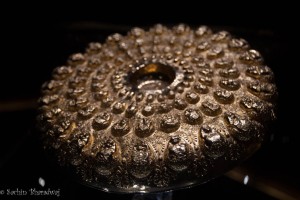 A significant discovery in Europe has been overlooked for nearly 60 years.
A significant discovery in Europe has been overlooked for nearly 60 years.
The Panagyurishte gold treasure was found in 1949 by Pavel, Petko and Michail Deikov while excavating clay for the tile factory where they worked located in present day Bulgaria. They noticed the shiny objects and then immediately called in archaeologists who confirmed that the treasure dated to the 4th millennium b.c. and belonged to royalty of the ancient kingdom of Thrace in modern day Bulgaria.
This discovery was displayed and discussed in the web article Ancient Treasures, Ancient Thracians, with special attention paid to the ornate craftsmanship and peculiar designs depicted on the objects. Diana Gergova gives a thorough examination of this find and goes into detail about its significance in her work Orphic Thrace and Achaemenid Persia.
What is most peculiar about this magnificent treasure is one artifact in particular, a round shaped dish called a “phiale” with concentric rows of dozens of heads representing Africans! To those that do not have a special interest in history i suspect that the magnitude of the discovery of this one piece would not be as great as it is to one such as myself who has a deep interest in Africa in antiquity as it relates to ancient Greco/Roman society.
This is a monumental discovery which has for whatever reason gone virtually ignored for over sixty years even though it was hailed as the find of a lifetime when it was first discovered. I think the reason for this is as simple as it is a common practice in the study of history, racism.
Here you have the famous ancient kingdom of Thrace of which Greek mythology is replete with stories, and you have a magnificent treasure one of which forces a conversation about the possibility of there being an African presence in Europe nearly 2500 years ago.
This “argument from silence” can be witnessed by reading an article about the treasure and observing how the “negro head” dish is mentioned but no scholarly effort is made to postulate its meaning or why they were depicted on royal treasure in the first place.
The Pilgrimage of Mansa Musa
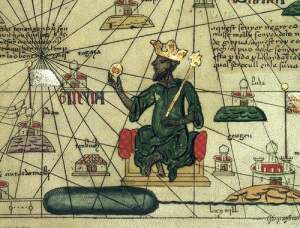 The great African emperor Mansa Musa and his magnificent pilgrimage to Mecca left an indelible mark on world history and indirectly funded the European renaissance!
The great African emperor Mansa Musa and his magnificent pilgrimage to Mecca left an indelible mark on world history and indirectly funded the European renaissance!
Mansa Musa (c.1280-1337c.), sat atop the throne of an empire that any other ruler of the world, modern or in antiquity, would envy. Modern economists who have studied the area controlled by Musa calculated his wealth at around $400 billion dollars by todays standards! Most of what is known about this important but little known African ruler has come down to us from Arab historians Al-Umari, Ibn Khaldun and Ibn Battutta. Aside from his celebrated wealth, Musa was known to have invited the Islamic worlds most respected and sought after architects and scholars to his kingdom so as to inaugurate an era of intellectual and architectural prosperity never seen before in West Africa. In fact, it is because of Mansa Musa that we owe the great learning centers and Islamic institutions that made places like Timbuktu a synonym for learning although in more modern times the name has become synonymous with any place obscure, desolate and on the fringes of the earth! Probably the most fascinating aspect of the life of this remarkable African ruler is his magnificent pilgrimage to Mecca in the year 1324 in which he famously led a caravan from his kingdom in West Africa across the Sahara en route to the holy city of Mecca in the kingdom of Saudi Arabia!
This caravan as reported by contemporary historians was reputed to number 60,000 men, with 12,000 servants each carrying large gold bars, also included were nearly 100 camels each carrying bags of gold dust weighing nearly 300 pounds! His generosity became evident as he gave away nearly all of his gold to the poor and trading some for souvenirs throughout his long journey. This extreme act of beneficence however had an unforeseen consequence in the entire Mediterranean world as the value of gold from Egypt to Europe was devalued for over a decade because of its relative abundance! In fact, this act by Mansa Musa has been accurately described as the first time in recorded history that the gold market was controlled by a single individual and indirectly help fund the Italian renaissance! The drawing on this post depicts a map made in the medieval period by European map makers depicting this little known African ruler sitting atop his throne with a huge gold nugget in one hand symbolizing his immense wealth, a gold scepter in the other hand thus demonstrating his royal authority and kingship. I am of the opinion that Mansa Musa was indeed worthy of the title his majesty! The History Channel had a documentary about this king at
History Channel: Mansa Moussa: Pilgrimage of Gold. Another reliable description of Musa can be found by reading Al-Umari’s description of Mansa Musa’s 1324 visit to Cairo.
Before a few setbacks I was on the right track!!!
AMENEMHET III
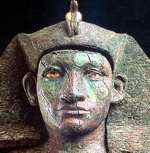
Egyptian monarch of the 12th Dynasty
Creating my Blog
This whole process is somewhat tedious but I think I’m getting the hang of it!#writdm #NewBlog





